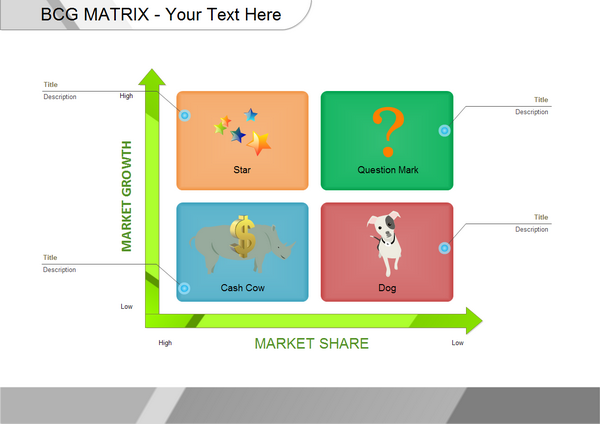

As a generalization, investors should look to buy assets if the Sharpe ratio is above the CML and sell if the Sharpe ratio is below the CML. While calculating the returns, the expected return of the portfolio for CML is shown along the Y- axis. On the contrary, for SML, the return of the securities is shown along the Y-axis.
A stem cell transplant can potentially cure CML in younger people with limited or no health concerns. But it’s typically recommended when CML does not respond well to TKIs or if the cancer has progressed past the chronic phase. CMML difference between cml and sml can also be caused by cancer treatments like chemotherapy or radiation therapy. Therapy-related CMML accounts for about 10 percent of CMML diagnoses, per Leukaemia Care. CMML is characterized by high levels of WBCs called monocytes.
While the Capital Market Line graphs define efficient portfolios, the Security Market Line graphs define both efficient and non-efficient portfolios. The beta of a security is a measure of itssystematic risk, which cannot be eliminated by diversification. Despite all the criticism, CAPM remains one of the most popular and widely used methods for calculating the expected rate of return. Many methods were used instead of CAPM, however, CAPM still remains a favourite. The main difference between CML and SML is that while they each describe different portfolios, CML only focuses on market investments, whereas SML also includes risk-free options. For an investor who underestimates or overestimates, this kind of calculation system is a systematic risk.
What is SML?
The intercept point of CML and efficient frontier would result in the most efficient portfolio, called the tangency portfolio. Basically, it shows the expected returns of assets depending on the non-diversifiable risk . Theoretically, a portfolio of securities can be arrived at such that the risk is at minimum possible level for a given level of expected returns.
If this expected return does not meet or beat the required return, then the investment should not be undertaken. Basically, the former determines the risk or return for efficient portfolios. This also defines your rate of return, but there is a catch. However, SML is very important for your investment or sharing.
- Here, the SML tells you about the market’s risk or that point in the graph which shows that your profits might be running at risk.
- On the other hand, SML determines both functioning and non-functioning portfolios.
- This means more the market risk premium, the steeper the slope is.
- Conversely, if the security lies below the SML, it means it offers lower premium and is overvalued and should be avoided in the portfolio.
Both CML and SML are important concepts in modern portfolio theory and are closely related to CAPM. There are a number of differences between the two; one of the major differences is in how risk is measured. Risk is measured by the standard deviation in CML and is measured by the beta in SML. The CML shows the level of risk and return for a portfolio of securities, whereas SML shows the level of risk and return for individual securities.
On the other hand, the SML measures the risk through beta, which helps to find the security’s risk contribution for the portfolio. The capital market line and security market line are two important lines that help to explain the relationship between risk and expected return. In this blog post, we’ve looked at the difference between these two lines and how they can be used in practical investment situations.
CAPM
SML determines the market risk you are running with your investment. It shows a point or degree beyond which you might run a risk with your shares. There are a few very important concepts when it comes to security analysis, such as DCF, CAPM, as well as CML, SML, and CAL. So, in this piece of writing, we will be discussing SML vs CAL. While standard deviation is the measure of risk in CML, Beta coefficient determines the risk factors of the SML. CAPM remains popular as it accounts for only systemic risk that cannot be diversified and also provides the information in a standard and clear format.

The above pages discussed some of the most widely used financial management concepts, such as CAPM, diversification, efficient portfolios, SML and CML. There are a lot of things to learn before you start your investment business. Different financial words, such as shares, rates, market business, profit or loss, and so on, must be understood. Learn about numerous theories and techniques before making any conclusions based on logic and experience earned from life’s trials and tribulations. Your rate of profit or loss in the portfolio of the market is determined by CML. Your risk to invest in the market is calculated by SML, which also provides a score as well so you know how risky your investment might be.
CML VS SML – Capital Market Line and Security Market Line| Finance
While the CML shows the rates of return for a specific portfolio, the SML represents the market’s risk and return at a given time, and shows the expected returns of individual assets. And while the measure of risk in the CML is the standard deviation of returns , the risk measure in the SML is systematic risk or beta. The capital market line represents portfolios that optimally combine risk and return. It is a theoretical concept that represents all the portfolios that optimally combine the risk-free rate of return and the market portfolio of risky assets. CML and SML are two terms used in finance that are often confused.
The Y axis represents the level of expected return, and the X axis shows the level of risk represented by beta. Any security that falls on the SML itself is considered to be valued fairly so that the level of risk corresponds to the level of return. Any security that lies above the SML is an undervalued security as it offers greater return for the risk incurred. Any security below the SML is overvalued as it offers less return for the given level of risk.
The capital market line is the line drawn from the risk free asset to the market portfolio of risky assets. The Y axis of the CML represents the expected return and X axis represents the standard deviation or level of risk. The CML is used in the CAPM model to show the return that can be obtained by investing in a risk free asset, and the increases in return as investments are made in more risky assets. The levels of return keep increasing as the risk undertaken increases. The CML, therefore, plays a part in assisting investors decide the proportion of their funds that should be invested in the different risky and risk free assets.
Key Differences between CML and SML
Several different exogenous variables can impact the slope of the security market line. For example, the real interest rate in the economy might change; inflation may pick up or slow down; or a recession can occur and investors become generally more risk-averse. It is rare that any market is in equilibrium, so there may be cases where a security experiences excess demand and its price increases belong where CAPM indicates the security should be. Any gap between the actual return and the expected return is known as alpha. When alpha is negative, excess supply raises expected return.
These make the pillars of financial management and investment management world where they hold prime importance in taking investment related decisions. In fact, the utilization of CAPM in the investment management industry and corporate finance world has become quire advanced and sophisticated. Further, it is used parallel with other techniques and methods such that the results can be validated and outliers can be identified and rectified. However, if the severity is lower than CML, then you will need to sell stocks or assets.
SML is a graph that shows our level of interest, but there’s a catch. The SML illustrates how your earnings might be jeopardized in this graph. The CML is the average expected return for your shares or investment.
SML also shows the anticipated returns of individual assets. On the other hand, CML is a graphical representation that tells the rate at which the securities are providing a return. In simple words, it helps to determine the degree of profit an investor makes as per their investment. Or, we can say that CML shows the rate of returns on the basis of risk-free rates and the risk level in a portfolio. SML represents the relationship between expected return and systematic risk for individual securities or portfolios. Explain and graphically depict how security market line is different from Capital Market Line .
In short, the CML is more generalizable than the SML and considers a broader range of factors when measuring risk and return. The y-axis values are different in either case; while expected return of a security is represented for SML, expected return of the portfolio is represented for CML. Hence, SML represents expected return of individual securities while CML represents the same for all efficient portfolios. Capital Market Line is a theoretical concept that represents all the portfolios that optimally combine the risk-free rate of return and the market portfolio of risky assets. Security Market Line measures the risk through beta, which helps to find the security’s risk contribution to the portfolio. It is a graph which originates from capital asset pricing model .
